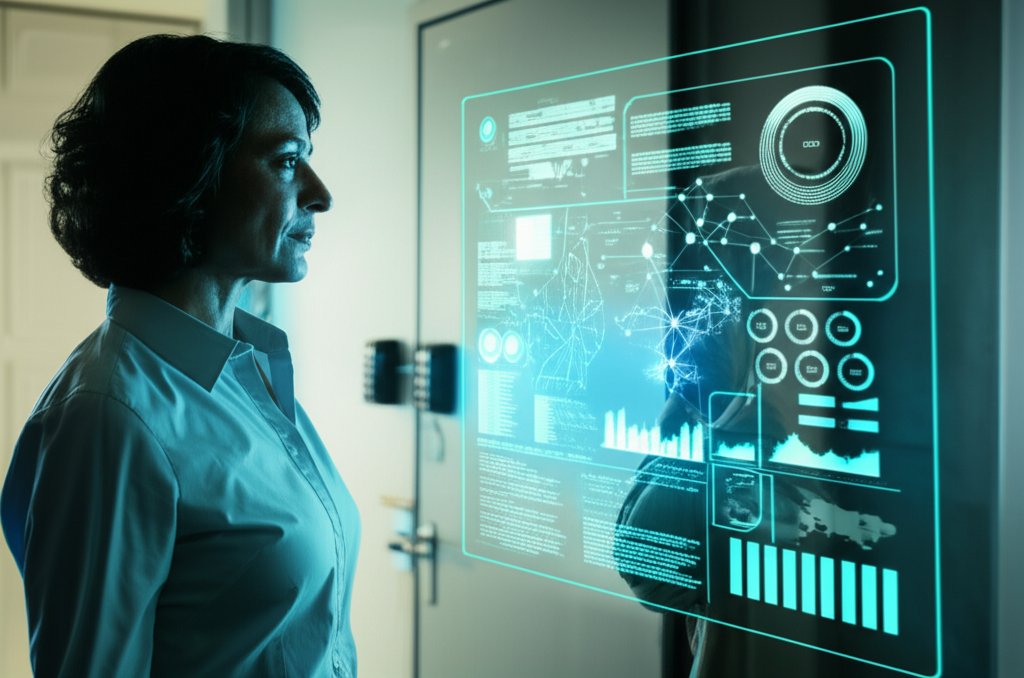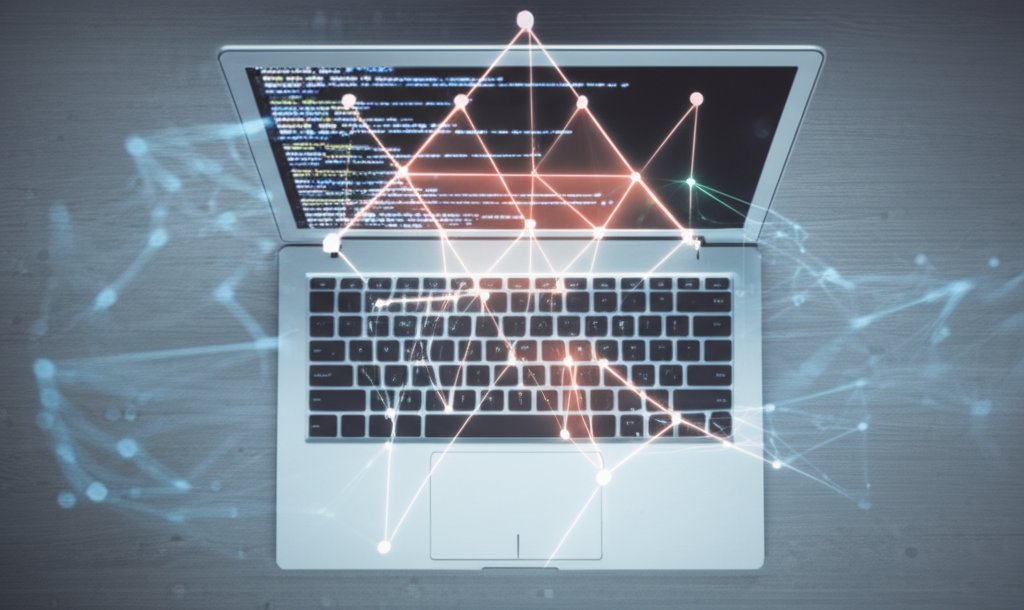In our increasingly digital world, the buzz around Artificial Intelligence (AI) is impossible to ignore. From smart assistants to self-driving cars, AI promises to transform nearly every aspect of our lives. But what about our digital safety? Specifically, when it comes to defending against cyber threats, we’ve all heard the whispers: “AI-powered cybersecurity is the ultimate solution!” It sounds incredibly appealing, doesn’t it? A magic bullet that will simply zap all online dangers away, making our digital lives impervious.
As a security professional, I’ve seen firsthand how quickly technology evolves, and how swiftly cybercriminals adapt. It’s my job to help you understand these complex shifts without falling into either fear or complacency. So, let’s cut through the hype and get to the honest truth about AI-powered cybersecurity. Is it truly the silver bullet we’ve been waiting for, or is there more to the story for everyday internet users and small businesses like yours seeking robust digital protection?
Understanding AI-Powered Cybersecurity: What It Means for Small Businesses and Everyday Users
Before we dive into its capabilities, let’s clarify what we’re actually talking about. When we say AI-powered cybersecurity, we’re primarily referring to the use of Artificial Intelligence (AI) and Machine Learning (ML) techniques to detect, prevent, and respond to cyber threats. Think of it like a super-smart digital assistant, tirelessly watching over your online activity.
Instead of being explicitly programmed for every single threat, these AI systems are designed to learn. They analyze massive amounts of data – network traffic, email content, user behavior, known malware patterns – to identify what’s normal and, more importantly, what’s not. For example, imagine your business’s email system using AI: it constantly learns what legitimate emails look like from your contacts, allowing it to immediately flag a new, highly convincing phishing attempt from an unknown sender that a traditional filter might miss. This is AI-powered threat detection in action for a small business. They’re not replacing human intelligence, but augmenting it, making security more proactive and efficient.
The Promise of AI: Where It Shines in Protecting Your Digital Assets
There’s no denying that AI brings some serious firepower to our defense strategies. It’s a game-changer in many respects, offering benefits that traditional security methods simply can’t match. Here’s where AI truly shines in enhancing your digital security for entrepreneurs and individuals:
-
AI for Advanced Threat Detection: Catching Malware and Phishing Faster
AI’s ability to process and analyze vast quantities of data at lightning speed is unparalleled. It can spot tiny, subtle anomalies in network traffic, unusual login attempts, or bizarre file behaviors that a human analyst might miss in a mountain of logs. This means faster detection of malware signatures, advanced phishing attempts, and even novel attacks that haven’t been seen before. By learning patterns, AI can often predict and flag a potential threat before it even fully materializes, offering proactive cybersecurity solutions for SMBs.
-
Automating Cybersecurity Tasks for SMBs: Saving Time and Resources
Let’s be honest, cybersecurity can be incredibly repetitive. Scanning emails, filtering spam, monitoring logs – these tasks are crucial but time-consuming. AI excels here, automating these mundane but vital duties. This not only makes security more efficient but also frees up valuable time for individuals and, especially, for small businesses with limited IT staff. It means your security systems are working 24/7 without needing a human to constantly babysit them, making AI in business security a major efficiency booster.
-
Adaptive AI Defenses: Staying Ahead of Evolving Cyber Threats
Cyber threats aren’t static; they’re constantly evolving. Traditional security often relies on known signatures or rules. Machine learning, however, allows systems to “learn” from new threats as they emerge, constantly updating their defensive knowledge base. This adaptive security means your defenses become smarter over time, capable of “fighting AI with AI” as cybercriminals increasingly use AI themselves to craft more sophisticated attacks.
-
Empowering Small Businesses: Accessible AI Cybersecurity Solutions
For small businesses, sophisticated cyber defenses often feel out of reach due to budget constraints and lack of specialized staff. AI-powered tools can democratize high-level protection, offering capabilities once exclusive to large enterprises at a more accessible cost. This helps SMBs better defend themselves against increasingly sophisticated attackers who don’t discriminate based on company size, truly leveling the playing field for AI cybersecurity for small businesses.
The Limitations of AI in Cybersecurity: Why It’s Not a Magic Bullet for Digital Safety
Despite its incredible advantages, it’s crucial to understand that AI is not an infallible magic wand. It has limitations, and ignoring them would be a serious mistake. Here’s why we can’t simply hand over all our digital safety to AI and call it a day:
-
False Positives and Missed Threats: Understanding AI’s Imperfections in Security
AI, like any technology, can make mistakes. It can generate “false positives,” flagging perfectly safe activities or files as dangerous. Imagine your smart home alarm constantly going off because a cat walked by your window. This “alert fatigue” can lead people to ignore genuine threats. Conversely, AI can also miss highly novel threats or “zero-day” attacks that don’t match any patterns it’s been trained on. If it hasn’t learned it, it might not see it, highlighting the need for vigilance even with advanced AI-powered threat detection.
-
Adversarial AI: When Cybercriminals Use AI Against Your Defenses
This is a particularly sobering truth: cybercriminals are also leveraging AI. They use it to create more convincing phishing emails, develop adaptive malware that can evade detection, and craft sophisticated social engineering attacks. This “adversarial AI” means that while we’re trying to use AI to defend, attackers are using it to compromise our defenses. It’s an ongoing, high-stakes digital chess match that demands continuous innovation in our AI in business security strategies.
-
The Human Element: Why AI Cybersecurity Needs Good Data and Expert Oversight
The saying “garbage in, garbage out” perfectly applies to AI. An AI system is only as effective as the data it’s trained on. If the data is biased, incomplete, or corrupted, the AI will make poor or incorrect decisions. Furthermore, there’s often a “black box” problem where it’s difficult to understand why an AI made a particular decision. Human expertise remains vital for context, critical analysis, complex problem-solving, and ensuring ethical considerations are met. We need human minds to train, monitor, and refine these powerful tools, emphasizing the importance of AI vs. human security expertise collaboration.
-
Cost and Implementation Challenges of Advanced AI Security for SMBs
While AI-powered security for small businesses is becoming more accessible, advanced solutions can still carry a significant cost and complexity, especially for smaller organizations. Implementing, configuring, and continuously maintaining these systems requires expertise and resources. It’s not a set-it-and-forget-it solution; it demands ongoing monitoring and updates to stay effective against evolving threats.
AI as a Powerful Cybersecurity Tool, Not a Digital Magic Wand
The real answer is clear: AI is a powerful, transformative tool that has significantly enhanced our cybersecurity capabilities. It automates, detects, and adapts in ways previously unimaginable, making our digital defenses far more robust. However, it is fundamentally an enhancement to cybersecurity, not a complete replacement for all other strategies. It’s an essential component of a strong defense, not the entire defense.
Think of it like a state-of-the-art security system for your home. It has motion sensors, cameras, and smart locks – all powered by sophisticated tech. But would you ever rely on just that without locking your doors and windows yourself, or teaching your family about basic home safety? Of course not! AI works best when it’s part of a comprehensive, layered security strategy.
Practical AI Cybersecurity Strategy: Steps for Everyday Users and Small Businesses
Given that AI isn’t a silver bullet, what does a smart, AI-enhanced security strategy look like for you?
-
Foundational Cyber Hygiene: The Essential Basics of Digital Security
I can’t stress this enough: the foundational practices of cyber hygiene remain your most critical defense. No amount of AI can fully protect you if you’re not doing the basics. This includes creating strong, unique passwords (and using a password manager!), enabling multi-factor authentication (MFA) everywhere possible, keeping all your software updated, and being vigilant against phishing. These are your digital seatbelts and airbags – essential, no matter how smart your car is.
-
Leveraging Accessible AI Security Tools: Antivirus, Email Filters, and More
You’re probably already using AI-powered security without even realizing it! Many common antivirus programs, email filters (like those in Gmail or Outlook), and even some VPNs now integrate AI and behavioral analytics. Look for security software that explicitly mentions features like “advanced threat detection,” “behavioral analysis,” or “proactive threat intelligence.” These tools leverage AI to enhance your existing defenses without requiring you to be an AI expert.
-
Cybersecurity Awareness Training: Empowering Employees Against AI-Powered Phishing
Even with AI handling automated tasks, the human element remains paramount. Education is your strongest shield against social engineering and phishing attacks, which often bypass even the smartest AI. Make sure you and your employees (if you’re a small business) understand the latest threats. AI can even help here, with tools that simulate phishing attacks to train your team to spot red flags, forming a crucial part of your employee cybersecurity training AI strategy.
-
Managed Security Services: Expert AI Cybersecurity for Small Business Owners
If you’re a small business owner feeling overwhelmed, consider outsourcing your cybersecurity to a Managed Security Service Provider (MSSP). These providers often have access to and expertise with sophisticated, enterprise-grade AI tools that would be too costly or complex for you to implement in-house. It’s a way to get top-tier protection and expert monitoring without the significant upfront investment or staffing challenges, offering specialized managed security services for small business.
-
Applying Simplified Zero Trust Principles with AI for Enhanced Security
A key principle that works wonderfully with AI is “Zero Trust.” In simple terms, it means never automatically trusting anything or anyone, whether inside or outside your network. Always verify. This mindset, combined with AI’s ability to constantly monitor and authenticate, creates a much more secure environment. If an AI flags unusual activity, the “Zero Trust” approach ensures that access is revoked or verified until proven safe, regardless of prior permissions. This forms a robust zero trust architecture for SMBs.
The Evolving Role of AI in Cybersecurity: What to Expect Next
The role of AI in cybersecurity will only continue to grow. We’ll see even greater integration into everyday tools, making robust security more seamless and user-friendly. AI will become even more adept at predictive analytics, identifying potential attack vectors before they’re exploited. However, the cat-and-mouse game will also persist, with cybercriminals continually refining their own AI-powered attacks. This means human-AI collaboration will remain the key. Our vigilance, critical thinking, and ethical decision-making will be indispensable partners to AI’s processing power and speed, maintaining the balance between AI vs. human security expertise.
Conclusion: A Balanced Approach to Digital Safety with AI
So, is AI-powered cybersecurity the silver bullet? The honest truth is no, it’s not. But that’s not a bad thing! Instead of a single magic solution, it’s an incredibly powerful, intelligent tool that has fundamentally changed the landscape of digital defense for the better. It allows us to be faster, smarter, and more adaptive than ever before.
However, true digital safety isn’t about finding a “silver bullet.” It’s about building a robust, layered defense that combines the intelligence and efficiency of AI with the irreplaceable elements of human judgment, basic cyber hygiene, and continuous learning. Embrace the power of AI, but never neglect the fundamentals. By doing so, you’ll be empowering yourself to take control of your digital security, creating a far more resilient shield against the ever-present threats of the online world. This balanced approach is the ultimate digital security for entrepreneurs and everyday users alike.
Protect your digital life! Start with a password manager and 2FA today.









